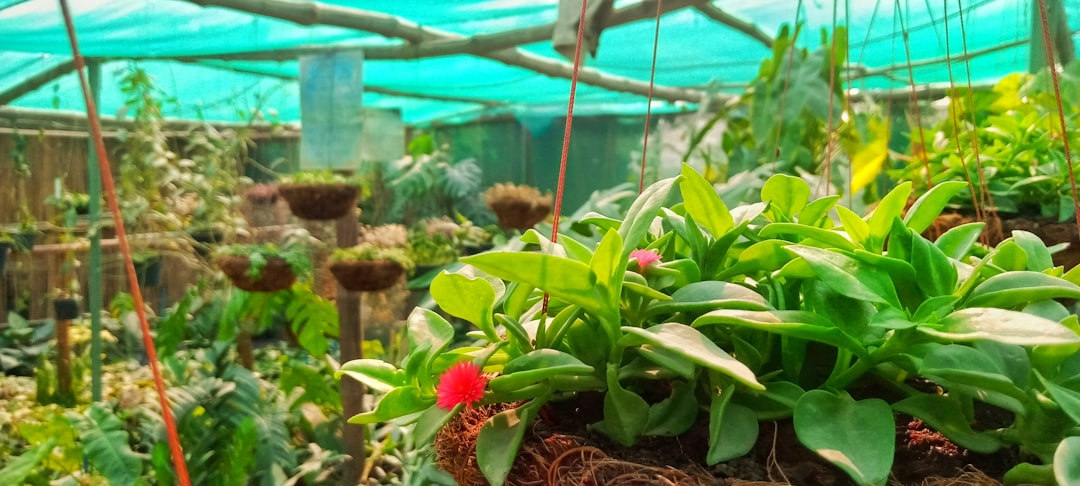Conquering the Webworm Invasion: A Gardener's Guide

Webworms can quickly turn a beautiful yard into an eyesore. These tiny pests may seem insignificant at first glance, but they have the potential to cause significant damage to your garden. In this article, we'll explore the world of webworms, understand their behavior, and learn effective strategies to get rid of them before they create a big, ugly problem in your yard.
### Understanding Webworms
Webworms are the larvae of certain moths. They are known for creating large, silken webs in trees and shrubs, where they feed on the leaves. These webs can be quite unsightly and can also reduce the health and vitality of the plants. There are several species of webworms, but the most common ones in North America are the fall webworm and the eastern tent caterpillar. The fall webworm typically appears in late summer and early fall, while the eastern tent caterpillar is more active in the spring.
### Identifying Webworm Infestations
One of the first signs of a webworm infestation is the presence of large, silken webs in your trees or shrubs. These webs can be found on the tips of branches and may contain numerous small, caterpillar-like larvae. The larvae are usually light-colored with black or brown markings and can range in size from a few millimeters to over an inch long. Another sign of a webworm infestation is the damage to the leaves. Webworms feed on the leaves, causing them to turn brown and wilt. In severe cases, the leaves may be completely stripped from the plant, leaving it looking bare and unhealthy.
### The Impact of Webworms on Your Garden
Webworms can have a significant impact on the health and appearance of your garden. When they feed on the leaves of your plants, they reduce the plant's ability to photosynthesize, which can lead to stunted growth and reduced yields. In addition, the large, silken webs created by webworms can be a major eyesore, detracting from the beauty of your yard. If left untreated, a webworm infestation can spread quickly, affecting multiple plants and causing widespread damage.
### Natural Predators of Webworms
One of the most effective ways to control webworms is to encourage their natural predators. Birds, such as chickadees, nuthatches, and woodpeckers, are known to feed on webworms. You can attract these birds to your yard by providing bird feeders, bird baths, and nesting boxes. Ladybugs and lacewings are also natural predators of webworms. These beneficial insects can be purchased at garden centers and released into your yard to help control the webworm population.
### Manual Removal of Webworms
If you have a small infestation of webworms, you can try removing them manually. Use a pair of pruning shears or a long stick to break open the webs and expose the larvae. Then, you can either pick the larvae off the plant by hand or use a vacuum cleaner to suck them up. Be sure to dispose of the larvae in a sealed plastic bag to prevent them from returning to your yard.
### Chemical Control of Webworms
If natural predators and manual removal methods are not effective, you may need to use chemical pesticides to control the webworm population. There are several pesticides available that are specifically designed to target webworms. When using pesticides, it's important to follow the instructions on the label carefully and to wear protective clothing and equipment. Be sure to apply the pesticide at the appropriate time of day and under the right weather conditions to ensure maximum effectiveness.
### Preventing Future Webworm Infestations
Once you've successfully gotten rid of the webworms in your yard, it's important to take steps to prevent future infestations. Keep your yard clean and free of debris, as webworms are attracted to decaying plant matter. Prune your trees and shrubs regularly to remove any dead or diseased branches, which can provide a breeding ground for webworms. In addition, you can apply a preventive insecticide to your plants in the spring to help keep webworms at bay.
### Conclusion
Webworms can be a nuisance, but with the right knowledge and strategies, you can effectively control them and keep your yard looking beautiful. By understanding the behavior of webworms, identifying infestations early, and using a combination of natural and chemical control methods, you can get rid of these little pests before they create a big, ugly problem in your yard. Remember to take preventive measures to keep webworms from returning in the future, and enjoy a healthy, pest-free garden all season long.